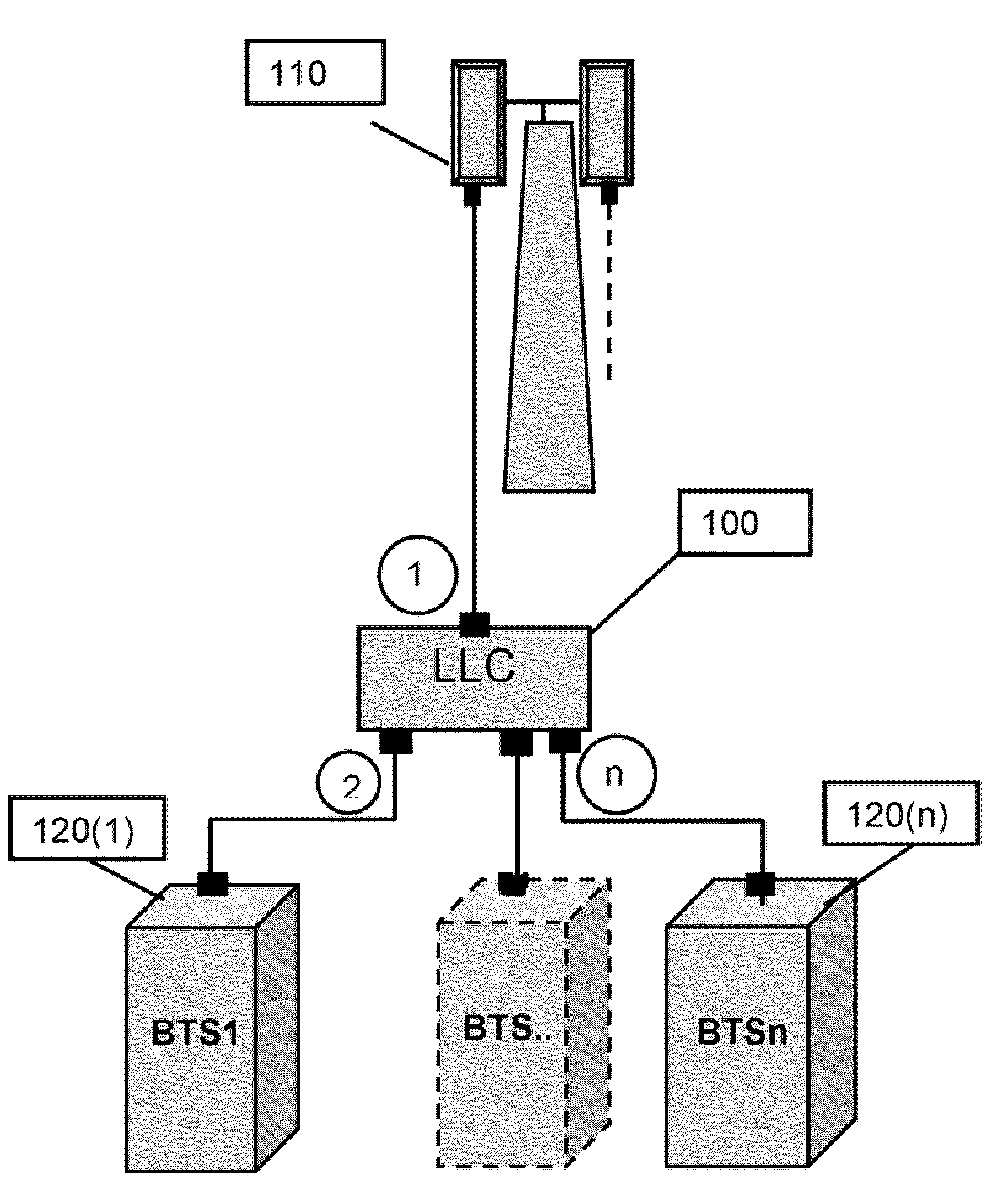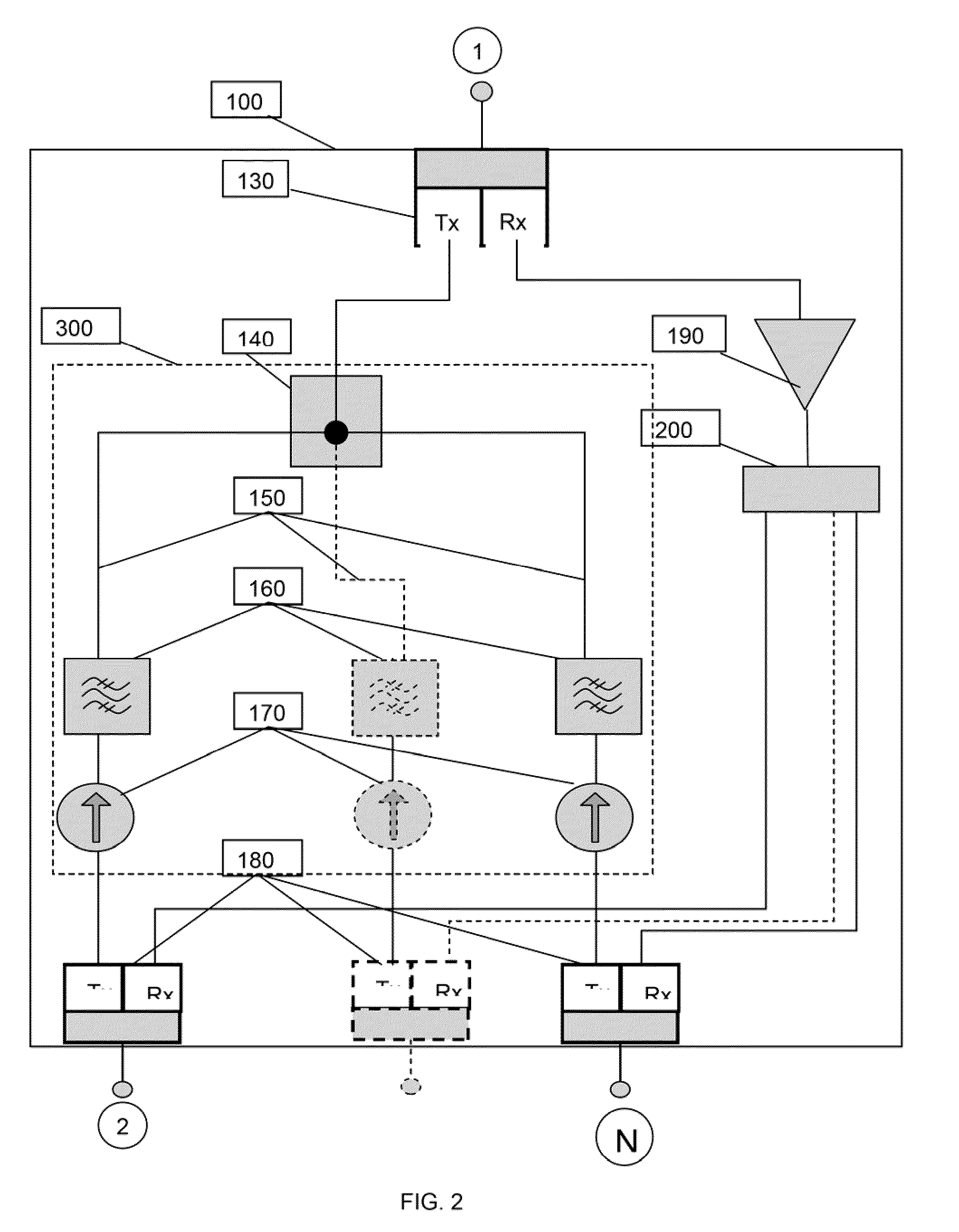Broadband combining system with high spectrum efficiency for use in wireless communications
- Summary
- Abstract
- Description
- Claims
- Application Information
AI Technical Summary
Benefits of technology
Problems solved by technology
Method used
Image
Examples
Embodiment Construction
[0029]FIG. 1 illustrates an exemplary embodiment of a wireless communication system with N base stations (or transceivers) collocated on the same site. The system includes a multiplexer-combiner (LLC) module 100 that allows operation of a number of base stations (transceivers) 120 on the same antenna 110. In this configuration, the Tx / Rx ports of all tranceivers from BTS1 to BTS(N) are connected to the same number of input ports 2 to N correspondingly of the (N+1)-port LLC 100. The output port 1 of the LLC 100 is connected to a common antenna 110 and contains N Tx / Rx signals from all the combined base stations.
[0030]FIG. 2 shows internal connections between different components of multiplexer-combiner (LLC) module 100. Multiplexer-combiner module 100 has a common port 1, where all signals from the collocated base station transceivers are combined. Individual ports 2 to N are used to interface with the collocated base station transceivers. The Tx / Rx ports of each base station transce...
PUM
 Login to view more
Login to view more Abstract
Description
Claims
Application Information
 Login to view more
Login to view more - R&D Engineer
- R&D Manager
- IP Professional
- Industry Leading Data Capabilities
- Powerful AI technology
- Patent DNA Extraction
Browse by: Latest US Patents, China's latest patents, Technical Efficacy Thesaurus, Application Domain, Technology Topic.
© 2024 PatSnap. All rights reserved.Legal|Privacy policy|Modern Slavery Act Transparency Statement|Sitemap



